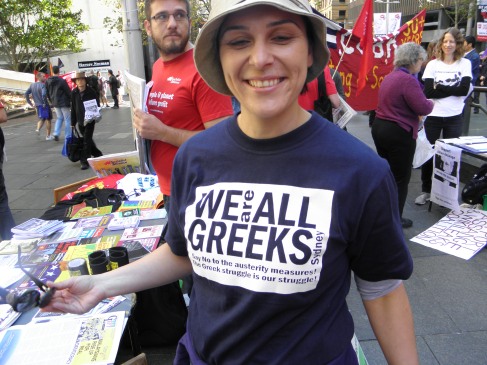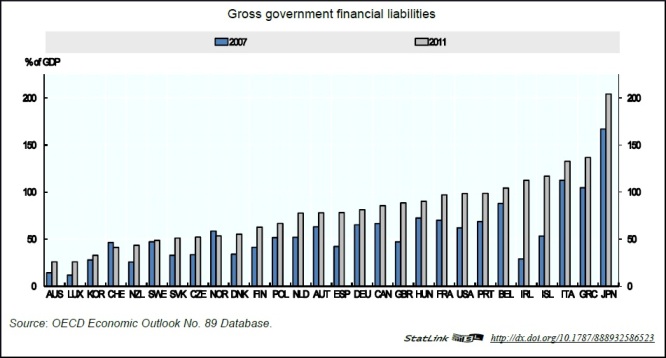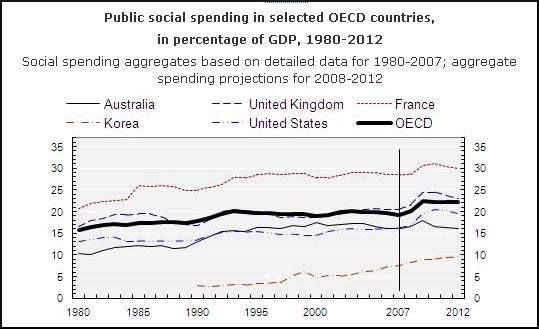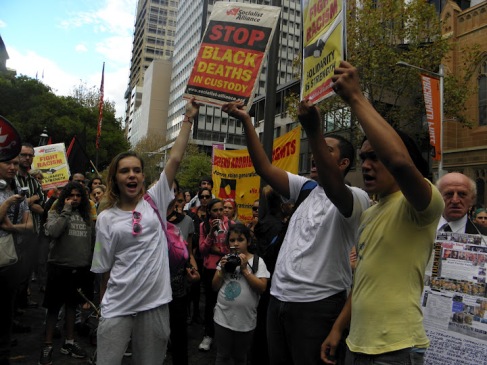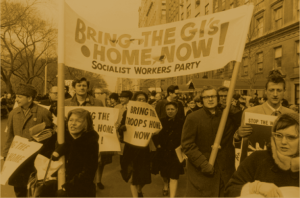
Barry Sheppard (right, holding banner pole with Sylvia Weinstein) at an anti-war march in New York in 1966 (photo by Eli Finer taken from Volume I of Barry’s Memoir).
Reviewed by Peter Boyle:
The Party, The Socialist Workers Party 1960-1988, Volume I: The Sixties, A Political Memoir, by Barry Sheppard, Resistance Books (Sydney), 2005, 354 pages.

Barry Sheppard.
The Party, The Socialist Workers Party 1960-1988, Volume II: Interregnum, Decline and Collapse, 1973-1988, A Political Memoir, by Barry Sheppard, Resistance Books (London), 2012, 345 pages.
In the 1960s and 1970s, the US Socialist Workers Party was one of the most promising socialist organisations in any imperialist country. It had survived the conservatism and isolation of the 1950s to play a significant role in building many progressive movements, particularly the fight against the Vietnam war.
And yet, beginning in the 1980s the SWP degenerated, shrinking from several thousand active and engaged members to a tiny cult-like sect with no involvement in any real struggles.
So, like many others who were significantly politically influenced by the SWP, I have looked forward to the second volume of Barry Sheppard’s political memoir of his experiences as a central leader of that party from 1960 to 1988.
His first volume covered 1960-1973, the period when the SWP emerged from isolation to play a key role in the mass radicalisation of those years. The second continues the account if the SWP’s political interventions and describes and tries to explain the party’s degeneration. It is a valuable contribution towards an explanation of what happened, but in my view more remains to be said, from different perspectives.
Three causes
Barry proposes three main reasons for the degeneration of the SWP:
1. The “long period without a new radicalisation” since the end of the 1970s. This period of class retreat “weighed down on all socialist organisations, including the SWP,” Barry argues. “It would have been tough sledding for the party even with the best leadership.”
2. The SWP’s 1981 abandonment of Leon Trotsky’s theory of permanent revolution, which Barry calls “a fundamental aspect of our program”. This, he argues, was part of an “blatantly opportunistic” attempt to link up with the leaderships of the Cuban, Nicaraguan and Grenadian revolutions. He argues that the programmatic revision required an assault on the party’s democratic norms to silence those who disagreed, and it also led to the SWP’s increasing abstention from mass movements.
3. The rise of a leadership cult around SWP national secretary Jack Barnes in the mid-1970s was the “fundamental cause of this degeneration” and it would be “naive to think that the membership itself could resist this juggernaut.” It could only have been stopped by the Political Committee. Barry, a member of that Committee, says he first realised in 1978 that a leadership cult was developing around Barnes, but did not act out of fear of being expelled from the party and ostracised. He apologises for his role in supporting Barnes in the political purges that devastated the SWP in the 1980s.
My main argument is that Barry has incorrectly rejected the SWP’s positive break from Trotskyism, and failed to see the importance of its later retreat from this positive outward motion to inwardness, idealism and programmatic fetishism – entrenched by systematic abstention from the actual class struggle.
Life after The Sixties
Many political memoirs of people who radicalised in the West in “The Sixties” look at its passing with a sense of nostalgia, regret and failure. Nothing since then lives up to their memory of those times of hope and revolutionary expectations. Radical politics since the 1980s seems like one long miserable slog.
The retreats in the face of the global capitalist neoliberal offensive are real, and I understand the emotional response, but I don’t share their generational disappointment.
The past three and a half decades have been difficult, but the era of war and revolutions didn’t end in the seventies. There were revolutionary upsurges in Nicaragua, Iran and Grenada in 1979, and later in Venezuela and Bolivia. The capitalist triumphalism after the fall of the Soviet Union and the bureaucratic regimes in Eastern Europe proved short-lived. We’ve seen movements against capitalist globalisation, the invasions of Iraq and Afghanistan, and climate change, the growing response to the global economic crisis, the Occupy movement, and the Arab Spring.
There has been more than enough political work to do in these “slow years” and new generations have come into struggle. Even in the most difficult times there are opportunities for engagement and chances to win new working-class militants to socialist movement.
The SWP degenerated in this period, but other socialist currents in the US and elsewhere have avoided its errors and have grown in political understanding and effectiveness.
SWP and the DSP
I joined the youth group associated with the Australian Socialist Workers Party (later renamed the Democratic Socialist Party, referred from now on as the DSP) in 1974. I remember one of the Australian veterans of “The Sixties” saying that he expected a world revolution within the next 10 years. I thought, “He’s hopeful.” I could already see once-radical student leaders putting on suits and ties. And while there were large demonstrations around various issues, the various social movements all seemed to be led by the same core of activists like me, moving from one meeting to the next.
But I threw myself wholeheartedly into building the socialist movement through the DSP, mainly on the basis that it appeared the most engaged and serious of the left groups I had come across.
The DSP was strongly influenced by the US SWP in the 1970s and early 1980s. Barry Sheppard was the first leader of the SWP to visit Australia in 1969 and by all accounts he gave good and encouraging advice, but avoided telling us what to do. In Volume I of his memoir, Barry says that some comrades in Australia asked him to intervene in an internal debate about
whether they should to start building a revolutionary party along the lines of the US SWP in
Australia. He declined:
“I explained that experience had made the SWP very wary of jumping into internal disputes among groups in other countries. They were disappointed, but knew I agreed with them on the necessity of building a party in Australia.”
Through the 70s, SWP leaders often visited Australia, and DSP attended conferences and political schools in the U.S. We generally got along, although there was a cultural gap: the SWP leaders thought we were too informal and hippie-ish, while we felt they acted superior and dressed like Mormons!
We also became members of the internal faction that SWP led in the Fourth International (FI). The faction officially dissolved in 1979, but factional attitudes and activity unfortunately continued. In Barry’s second volume he cites several examples of this continuing factionalism which he witnessed in his international assignment in the late 1970s to the FI’s United Secretariat based in Paris.
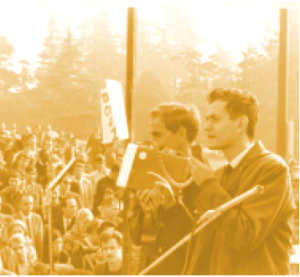
Peter Camejo addressing a student rally against fee rises in 1967. Photo by Brian Shannon taken from Volume I of Barry’s Memoir.
The US SWP leader who made the biggest impression on us was Peter Camejo, who visited us both when he was in the SWP and after he was kicked out – a development that Barry describes in his book. Camejo encouraged us to see Marxism not as a dogma but as a broad guide to understanding the dynamics of capitalism and a tool for action to change the system. That approach deeply influenced the evolution of the DSP’s thinking.
Political life in the DSP in the 1970s and early 1980s was strongly influenced by the US SWP. Every new issue of the SWP internal bulletin tended to spark the same debates and controversies in the Australia. For example, in his second volume, Barry mentions the big fuss about “exclusive social functions” and the fact that some comrades were expelled from the SWP for this “crime.” A similar controversy occurred in the DSP, but no one was expelled.
Over time, we found the SWP was moving away from giving friendly advice, and increasingly issuing what seemed like papal edicts. So in the mid-1980s, we broke free, rejecting its attempts to treat us as a satellite and to foster a secret faction in our organisation.
At the same time, we began our break from the sectarian heritage of the Trotskyist movement. We made a serious effort to learn from the real revolutionary leaderships that were emerging around the world, and we rejected the claim of many Trotskyists that only they were “real revolutionaries” and “real Marxists.” We came to understand that many parties that had actually led revolutions regarded Trotskyists as ultraleft and sectarian – and that was an accurate assessment of the Trotskyist groups they had experience with.
In a report adopted by the DSP National Committee in October 1984, national secretary Jim Percy summarised our evaluation of Trotskyism. In the past, he said, we had argued the followers of Juan Posada, Gerry Healy, Pierre Lambert, and Nahuel Moreno weren’t the “real” Trotskyists but sectarian aberrations from “genuine” Trotskyism.
“But here we have a big problem: The overwhelming majority of those in the world today who regard themselves as Trotskyists are not among those we have regarded as the ‘real’ Trotskyists; they are not members of the Fourth International.
“And the Trotskyists outside the Fourth International regard those in it in the same way — as ‘fake’ Trotskyists. Considerable time has and is spent by all these people debating who are the ‘real’ Trotskyists, fighting over who are the ‘real’ political heirs of Trotsky, and denouncing other Trotskyists as ‘revisionists,’ ‘betrayers,’ etc.
“An extraplanetary observer, looking at this phenomenon from outside, totally objectively, would think there’s something wrong with the bunch as a whole, would think that something bad has happened with this lot.”
We concluded that the Trotskyist movement, which didn’t have a mass base anywhere, was left with only its distinct program to justify its existence. And because of this, it developed a strong tendency to spend a lot of time in an endless elaboration of the written program. We called this “programmatic fetishism.”
Of course this isn’t only a Trotskyist problem: many Maoist groups have similar problems. But our criticism targeted the problems in our own heritage. In 1985 we left the Fourth International but we continued to collaborate with groups and individuals in the FI on a respectful bilateral basis, as we do with a much wider range of left parties around the world. This is an approach that works much better to advance the socialist movement today.
In the United States, from a somewhat different starting point, the SWP leadership was also moving away from the narrow Trotskyist tradition. In my opinion that was a natural development of the SWP’s strong engagement in struggle in the 1960s and 1970s, and a positive attempt to reach out to new revolutionary currents. It was also a major contributor to the considerable internal authority held by the Barnes leadership.
Barry explains:
“…the cult that developed around Jack Barnes… didn’t occur all at once, but over a period of years. Jack was a talented leader of the the SWP youth in the period of the radicalization of ‘The Sixties’. He emerged from that period as the recognised central figure among the other younger leaders, including myself, as well as among the older leaders of the party. It was Jack’s positive role in the previous period that turned into its opposite. From a positive force building the SWP, it became a negative and destructive force that wrecked the party.”
The problem was not, as Barry argues, that the party moved away from Trotskyism, but that the Barnes leadership reversed course. Instead of continuing to reach out to new revolutionary forces, it turned inward. At some point, the US SWP leadership abandoned any real attempt to reach out to, critically engage with and learn from the Cuban and other revolutionary currents.
The revolutions of 1979
Most of Barry’s accounts of the good political interventions by the SWP are in Volume I but there are also some accounts in Volume II. His account of the SWP’s support for Iranian socialists who intervened in the 1979 popular overthrow against the CIA-installed regime of Shah Reza Pahlavi. Barry was sent to Iran together with other comrades from the FI and his eyewitness accounts of this visit capture the revolutionary spirit of the time. This was a revolutionary development that could have taken Iran to an altogether different place than it is today.
The heroic, if shortlived, intervention by the Iranian comrades who set up the Hezb-e Kargaran-e Socialist (HKS – Socialist Workers Party) deserves to be studied.
Also in Volume II are accounts of the SWP’s approach to the Nicaraguan and Grenadian revolutions, though Barry had less direct involvement in these. The SWP took a lead in arguing against the more sectarian responses to these revolutions by others in the Trotskyist movement.
In his memoir North Star(Haymarket 2010) Peter Camejo says a major turning point occurred when the SWP abandoned serious solidarity with the Nicaraguan and Salvadoran revolutions as part of deepening the “turn to industry.” Camejo says the SWP leadership was hostile to his proposals that the party learn from actual revolutionary leaderships in these countries and study US working-class histories as a source of ideas and inspiration to advance the struggle today.
In the DSP, we pursued a different course. We carefully studied Marx, Lenin and Trotsky — and we also studied the experiences of Cuba, Nicaraguan and Grenada. We sent comrades to Nicaragua, Grenada and Cuba and to study the revolutionary processes. We built solidarity with these revolutionary struggle right through the 1980s. Later, we did the same with the Venezuelan and other revolutionary movements in Latin America, while rejecting the course of becoming uncritical cheerleaders for any revolutionary government or movement.
These efforts won two generations of post-Sixties revolutionaries to the DSP. Today many of them are part of the leadership of the Socialist Alliance, the group that the DSP merged into in January 2010.
While we in the DSP continued building solidarity with and learning from living revolutions, the US SWP leadership was embarking on an opposite course. It was setting out to build a mini-international with their party at the centre, as Barry describes in his second volume. The end result truly defies caricature: today a handful of grouplets in several countries distribute the newspaper of the US SWP – none has its own publication – and all abstain from any effective engagement in the labour and other social movements.
Revolutionary continuity?
It appeared to us that the SWP leadership was mainly interested in using its declared loyalty to the Cuban revolution to prove its claim to “revolutionary continuity.”
This is pretentious rubbish and an insult to the political ideas of Karl Marx and all real revolutionary movements. There is no credentials committee that can issue certificates of “revolutionary continuity.” Revolutionary parties and individuals only get the political respect they have earned in actual struggle. It’s what you do, not what you say, that counts.
As the DSP concluded in 1984:
“It’s a funny feature of the Trotskyist movement, almost a rule of thumb: The less achievements you have, the less is your humility.
“Perhaps that’s so because once you get into the real world, once you start moving in the direction you want to go, you begin to understand how far you still have to go and the complications of politics, the difficulties of revolutionary politics.
“That is, once you’ve started to take revolutionary struggle seriously, building a revolutionary party seriously and realising that it’s not a parlour game, you begin to estimate in a different light the achievements of others who’ve done far better than you.”
All organisations purporting be socialist need to have modesty and humility commensurate with their development, commensurate to the degree of political authority and actual leadership they have won through struggle in the working class. You don’t win leadership through theoretically “perfecting” and “protecting” a program. You only win revolutionary political authority through leading mass struggles in a way that empowers the working class and leads to revolutionary conclusions.
As Lenin wrote in 1920, many people knew about the discipline and unity of the Bolshevik party, but few understood that those things could not be proclaimed artificially, but had to be won and developed through leading mass struggles.
“First, by the class-consciousness of the proletarian vanguard and by its devotion to the revolution, by its tenacity, self-sacrifice and heroism.
“Second, by its ability to link up, maintain the closest contact, and—if you wish—merge, in certain measure, with the broadest masses of the working people—primarily with the proletariat, but also with the non-proletarian masses of working people.
“Third, by the correctness of the political leadership exercised by this vanguard, by the correctness of its political strategy and tactics, provided the broad masses have seen, from their own experience, that they are correct.
“Without these conditions, discipline in a revolutionary party really capable of being the party of the advanced class, whose mission it is to overthrow the bourgeoisie and transform the whole of society, cannot be achieved.
“Without these conditions, all attempts to establish discipline inevitably fall flat and end up in phrasemongering and clowning.”
A socialist party that develops a theoretical excuse for sustained political abstention is guaranteed to degenerate into a sect and to abandon any real programmatic wisdom it may have previously acquired. There have been socialist groups that recovered from some pretty whacky political positions simply because they have continued to engaged in the real movements of their time.
The SWP has done the opposite. It has deepened its abstentionist practice – and one result is that its programmatic positions have grown ever whackier.
In 1979 the SWP adopted a “turn to industry,” a tactic that subsequently hardened into a permanent workerist schema, in our opinion in the DSP. Its members, and the party as a whole, turned away from involvement in the progressive social and political struggles of the day, struggles which then were largely outside the framework of the organised labour movement. Its refusal to correct that error made degeneration inevitable.
The more disconnected a purportedly socialist organisation’s ideas are from the actual class struggle, the more it has to rely on restrictions on dissent and discussion within its ranks to police the line, and the more it has to use patronage and manipulation to maintain leadership solidarity.
In the end, being determines consciousness. An organisation’s program and its internal culture adapts to its practice.
The subjective factor and party democracy
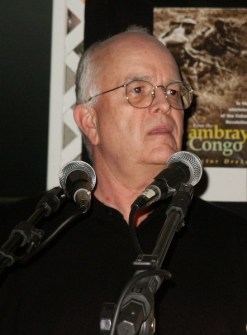
Jack Barnes
I never met Jack Barnes so I am in poor position to make any comment on Barry’s assessment of the role of his personality in the degeneration of the SWP. But I have some observations which flow from my previous points, but many more unanswered questions.
One would expect that a party that was generally healthy, engaged and self-critical, as the SWP was in the 1960s and early 1970s by the accounts of Barry and others, would have been able to deal with a leader who sought to build a personality cult.
So why did the collective SWP leadership at that time fail to stand up Barnes? Did he simply tactically outwit them and pick off his challengers one by one, as Barry suggests?
If Barnes’ political authority was built up in the 1960s and 1970s, when the SWP was bigger, more engaged and open to learning from new experiences and the experiences of other revolutionaries (especially those who were leading revolutions), when did he start using it to go in the opposite direction?
And why was he able to do this?
Barry tells us he was kept in line by fear of expulsion, of ostracism from the party he had dedicated his life to building, and of shunning by his comrades. He also explains his silence by the fear of being humiliated for not presenting the “correct line” in internal meetings – he gives several examples of he and other leading members being humiliated in this way by Barnes.
But such fear can only have such intimidating power if having an over focus on the “correct” line or the “real” revolutionary program has somehow become a fundamental part of the organisation’s culture. Such a culture is the very antithesis of the “revolutionary continuity” that the SWP sect and its leader pretend to represent.










